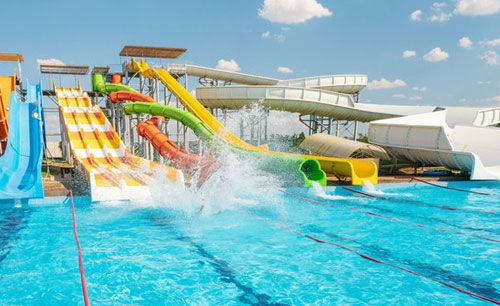There are several ways to treat wastewater in a Water Park. Some of these methods are called primary, secondary, or source treatment. Others include anaerobic ponds and activated sludge. Learn more about these processes and what your local treatment plant does.
Depending on the location of your home, you might have to purchase an STP to handle your sewage. Generally, residential buildings need at least one STP to treat sewage. Many STPs are located underground, making them difficult to maintain. Moreover, you may not be able to inspect them without hiring an expert. It is better to consult a professional if you have any doubts about the process.
Secondary treatment
Secondary wastewater treatment is necessary to remove the dissolved organic matter and settled solids from the wastewater. This is done using biological processes, including aeration, sedimentation in secondary clarifiers, and nitrification. These processes remove nearly 90 percent of the biochemical oxygen demand from wastewater. They also remove suspended solids and other pollutants.
The first step in the process is pretreatment, a method of preparing the wastewater for the next treatment step. Pretreatment processes can include equalization, neutralization, and oil and grease separation. This process is followed by primary treatment, usually screening, comminution, grit removal, and sedimentation.

In secondary treatment, the BOD concentrations are higher than the food sources of aerobic organisms. This causes a population shift to species with lower oxygen requirements. As the BOD concentrations rise, the secondary treatment ecosystem's food supply is reduced. This can lead to sudden declines in important species. Then, the biological process is not able to restore its normal BOD removal efficiency until aerobic species return to the ecosystem.

Source treatment
Source treatment of wastewater produced in Water Park involves a series of steps designed to reduce the organic and microbial content of the wastewater. Mechanical or biological processes typically perform this process. The initial step is designed to remove the suspended and gross solids from the wastewater. This process involves sedimentation by gravity, screening to trap solid objects and biological digestion. Chemicals are used to speed up the sedimentation process. This process can reduce BOD and total suspended solids by approximately 50-60%.
Reclaimed wastewater can be reused for a variety of applications. In the past, treated wastewater has been used in irrigation systems, golf course irrigation, and cooling water for power plants. Using wastewater in these settings has been studied for its beneficial properties, including improving soil fertility. However, it is important to ensure the safety and efficacy of wastewater reuse. There are several health risks associated with the reuse of wastewater.
Industrial wastewater comes from many sources, including mines, food production, and battery manufacturing. Many industries have begun to redesign their processes to reduce the pollution they produce. Other sources include the pulp and paper industry, nuclear power plants, and metalworking. Some of the sewage produced by these industries is contaminated with heavy metals, and wastewater from such industries should be treated in a wastewater treatment facility.
Anaerobic ponds
Anaerobic ponds are a natural way to treat wastewater in water parks. The ponds' natural processes can remove up to 60% of BOD. In addition, the process also allows for the release of ammonia into the atmosphere. The effluent can then be discharged to a separate treatment system.
Anaerobic ponds are a cost-effective solution for wastewater treatment. Their low-cost technology allows them to treat wastewater with a high BOD content. Generally, a single anaerobic pond can handle influent wastewater with less than 1000 mg/L BOD5. However, industrial wastewater can benefit from up to three anaerobic ponds. To get the best BOD removal, the pond should have a retention time of at least a day.
Anaerobic ponds are shallow-covered ponds with a large surface area. They are not regulated for temperature, and the ambient temperature prevails, resulting in very low conversion rates. In addition, they have very low operating and construction costs. However, their low COD reduction and low biogas production cancel any potential economic benefit.
Activated sludge
Wastewater treated with activated sludge can be reused, reducing the need to dispose of the treated water. The effluent of this process can range from 11 to 7600 cysts/l. It can also be used to enhance nitrification and remove color.
The process involves adding oxygen and nutrients to a concentrated mass of microorganisms. The sludge is stirred in a tank to ensure good contact between wastewater and microorganisms. Usually, the process uses a rectangular tank. The wastewater is introduced to the concentration of microorganisms, and the air is introduced through diffusers or agitation with an impeller. In some cases, pure oxygen is used. The treated wastewater then returns to a secondary sedimentation basin.
Treating wastewater produced in Water Park can be classified into Class A, and Class B. Class A biosolids are considered exceptional quality. It is non-infectious, stable, and has a low metal content.







































Share Post